Houzz Tour: A Sun-Soaked Solution for a Narrow Site
http://decor-ideas.org 11/08/2014 23:14 Decor Ideas
After living for years in a small unit, architects Tim Hill and Dominique Ng dreamed of building a home of their own. With the existing derelict house demolished, so began a joyful and exhilarating journey to make the most of a small site and fill it with much-needed light. Unlike the homes they had built for clients, this time they got to enjoy the home they’d built and to witness how first-time visitors reacted to it.
“What was really awesome about the house was getting to live in it through all the seasons and getting the feedback from people about the house you only get when you live in it,” says Hill, of Tandem Design Studio. “That was pretty exciting.”
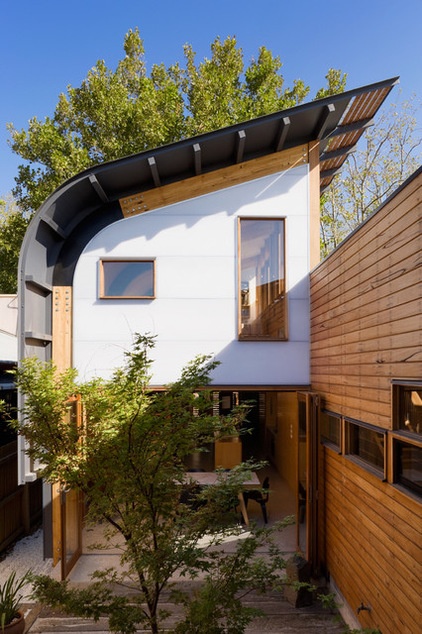
Houzz at a Glance
Who lived here: Tim Hill and Dominique Ng, both architects
Location: Kensington neighborhood of Melbourne, Victoria, Australia
Size: 1,593 square feet (48 square meters); 2 bedrooms, 2 bathrooms
What’s interesting: The site is only 20 feet wide. Hill lived in the house for six years before selling this year; sadly, Ng passed away shortly after the home was finished.
A 13-foot-high cliff-like wall built along the northern boundary with the adjacent property severely restricted sunlight from entering the site. “The overall aim was to build a property that could maximize the site’s potential whilst employing passive solar design principles,” Hill says.
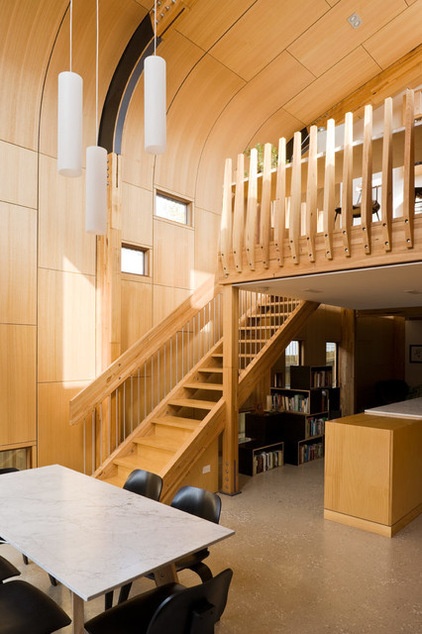
“When the builders were laying the slab, they were saying, ‘Who’d want to live in a dark, dirty hole like this?’” Hill recalls. “But when we built the sun shells, it just brought the sun in and filled the place with light.”
The sun shells form the roof and southern facade. The north, east and west walls are clad in wood-framed glass and translucent polycarbonate, framing views and admitting light while preserving privacy.
The window frames are made from Western redcedar, and the inside timber is a mix of Tasmanian oak and Victorian ash.
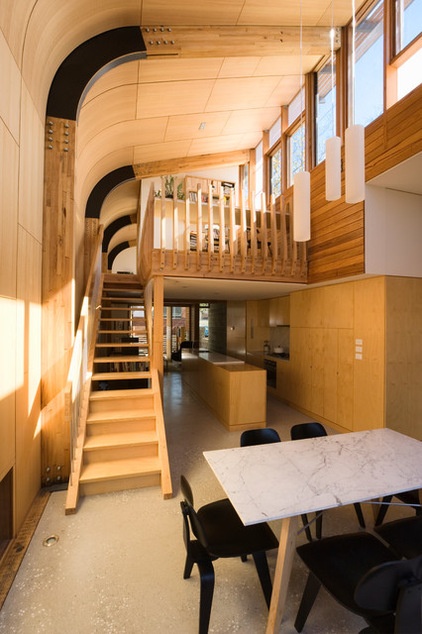
The western sun shell, closest to the street, traverses two stories and the living area, kitchen, dining area, study, bathroom and guest bedroom. The eastern sun shell — located across the courtyard, above the carport — houses the master bedroom and en suite.
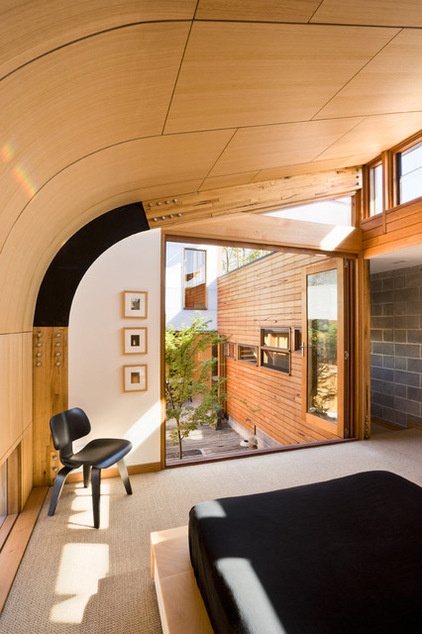
Passive cross ventilation works well throughout the home. “There was always a gentle breeze from bottom to top,” Hill says.
Sleeping in the main bedroom at night with the windows and concertina doors inspires a feeling of “glamping,” or glamorous camping. “It felt like you were under a canopy instead of in a house. It was a great place to live,” Hill says.
The translucent skin of the sun shells captures shadows of neighboring trees and passing clouds, and filters light into the interior. The sun-filled interior gave the home its nickname: Kensington Lighthouse.
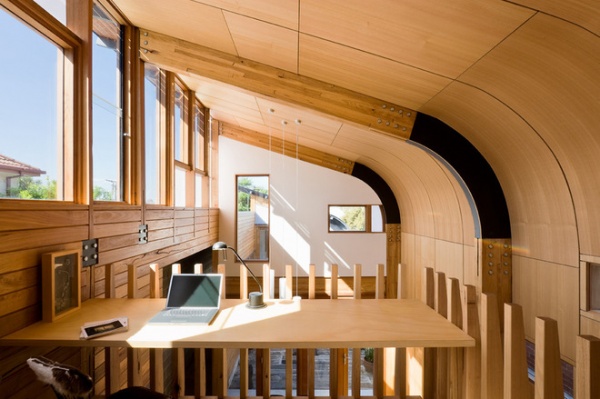
Hill and Ng designed much of the furniture themselves — the dining room table, coffee table, study desk and even the bed, which features built-in storage underneath and inside the headboard.
Low, intimate spaces were created for the lounge and kitchen, in contrast with a soaring space above the dining table, encapsulating the study and leading to the courtyard.
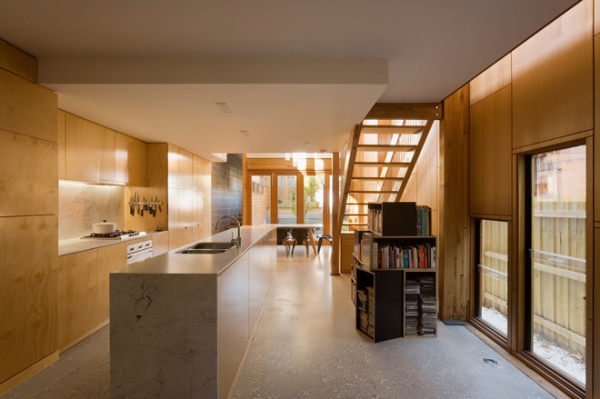
The kitchen has a simple and humble vibe, but with a designer edge, much like the home as a whole.
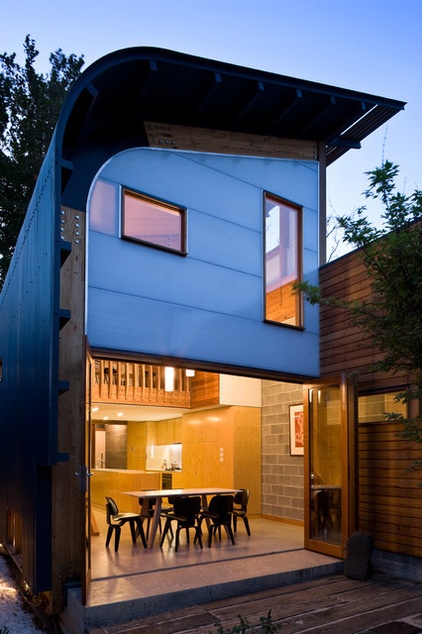
The roof sheet acts as an overarching module for the sun-shell design. “The spacing of timber portal frames, window widths and interior timber panels all follow this module, creating regular sizes for many components,” Hill says.
Decorative possibilities were identified and exploited within the underlying rationale, however. For example, the height of the windows, lengths of veneered panel and colors of the roof sheet were varied to break the unity of the larger surfaces.
“In this framework the decorative impulse of the fretwork of surrounding worker’s cottages was reinterpreted,” Hill says.
Dining chairs: Eames Molded Plywood Lounge Chair
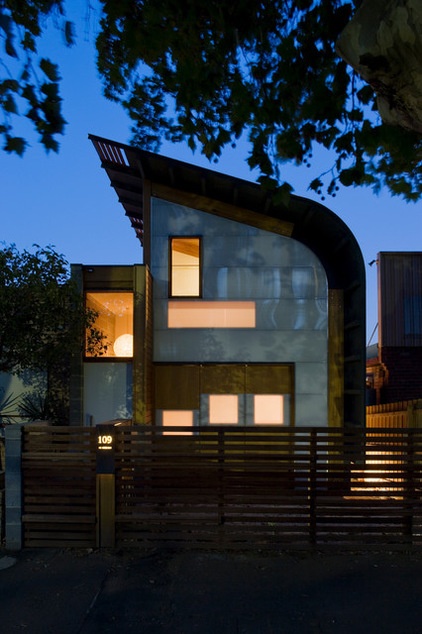
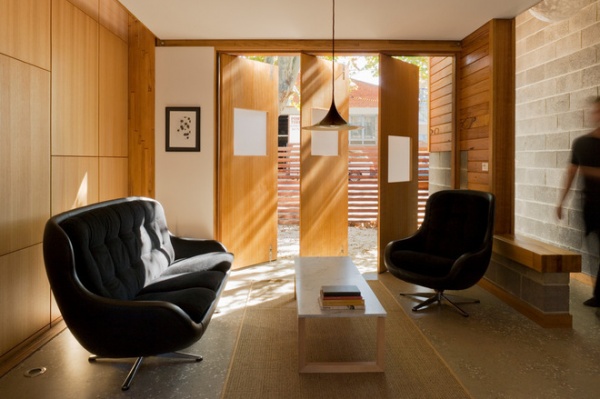
The living area’s doors are on pivots to let in the sunshine and breeze when the weather’s fine.
For furnishings they didn’t make themselves, the couple bought them secondhand. The pendant light is about 40 years old, and the sofa came with them from their rental unit in St. Kilda.
“It’s a ’50s sofa we bought secondhand for its small proportions,” Hill says. The limited space in the home they built meant the sofa suited their new home just as well.
The marble top on the dining table was left over from marble used in the bathroom. The couple bought two slabs cheaply from a company going out of business. They used leftover marble to top the coffee table, too.
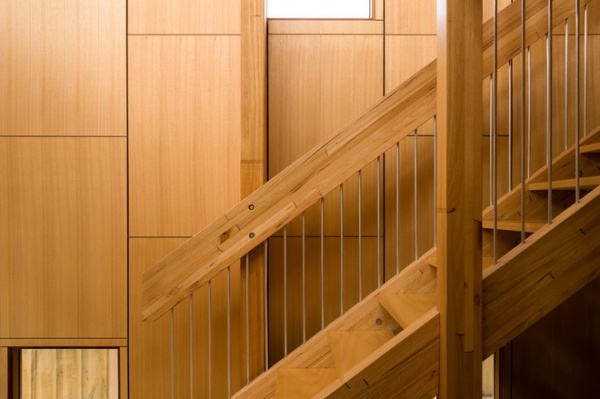
Natural materials were used throughout the home’s interior, exploring the idea of “material honesty.”
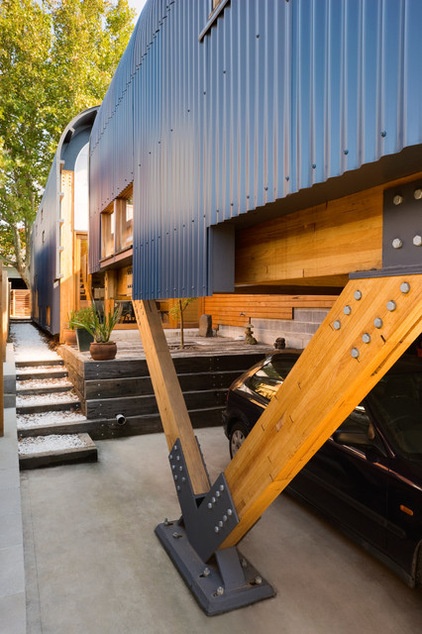
The same concepts are explored in the building’s structure, with expressed structural framing and exposed connections.
The link between the two sun shells — a linear element matching the neighboring wall — was created on the northern boundary, exaggerating the cliff-like quality of the northern edge. Platforms were established, some anchored on the ground and others floating up against the link. Finally, two sun shells were introduced, enclosing the platforms.
“Peeping over the link, the sun shells capture sunlight, reflecting it inside and establishing the necessary temperature differential for cross ventilation,” describes Hill.
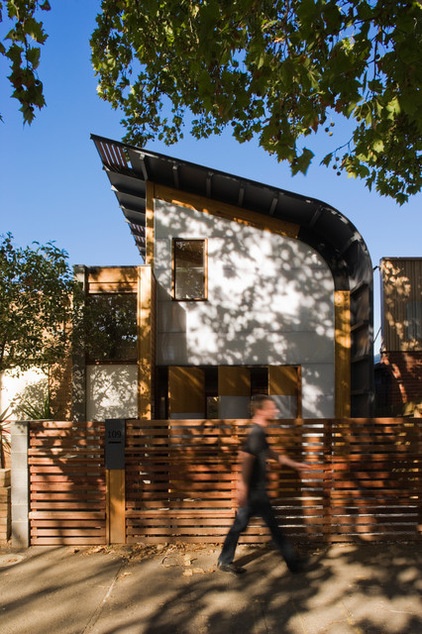
The Kensington Lighthouse is an architectural feat. Hill is now designing another home for his current partner and 2-year-old son — just around the corner in Kensington.
Browse more homes by style:
Small Homes | Colorful Homes | Eclectic Homes | Modern Homes | Contemporary Homes
Midcentury Homes | Ranch Homes | Traditional Homes | Barn Homes | Townhouses | Apartments | Lofts | Vacation Homes
Related Articles Recommended












